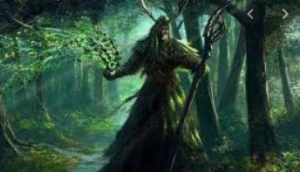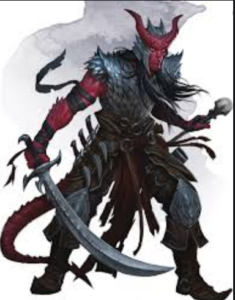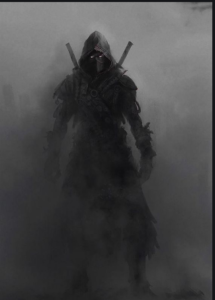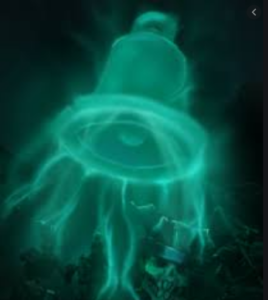Druids are a really versatile class. Between their available archetypes, they’re ready to serve mixed roles as scouts, strikers, blasters, support casters, and controllers. Their spell list features a lot of unique options, and there’s a robust emphasis on area control spells, and most of the Druid’s best spells require Concentration. By spellcaster standards, this makes the Druid relatively simple to play because you so rarely got to track quite one ongoing spell effect, but it certainly doesn’t make them less fun or less powerful.
Druid Spells 5e

Cantrips (Level – 0)
- Druidcraft
- Guidance
- Mending
- Poison Spray
- Produce Flame
- Resistance
- Shillelagh
Level 1
- Detect Poison and Disease
- Entangle
- Faerie Fire
- Fog Cloud
- Goodberry
- Healing Word
- Jump
- Longstrider
- Purify Food and Drink
- Speak with Animals
- Thunderwave
- Animal Friendship
- Charm Person
- Create or Destroy Water
- Cure Wounds
- Detect Magic
Level – 2
- Animal Messenger
- Barkskin
- Darkvision
- Enhance Ability
- Find Traps
- Flame Blade
- Flaming Sphere
- Gust of Wind
- Heat Metal
- Hold Person
- Lesser Restoration
- Locate Animals or Plants
- Locate Object
- Moonbeam
- Pass without Trace
- Protection from Poison
- Spike Growth
Level – 3
- Call Lightning
- Conjure Animals
- Daylight
- Dispel Magic
- Meld into Stone
- Plant Growth
- Protection from Energy
- Sleet Storm
- Speak with Plants
- Water Breathing
- Water Walk
- Wind Wall
Level – 4
- Blight
- Confusion
- Conjure Minor Elementals
- Conjure Woodland Beings
- Control Water
- Dominate Beast
- Freedom of Movement
- Giant Insect
- Hallucinatory Terrain
- Ice Storm
- Locate Creature
- Polymorph
- Stone Shape
- Stoneskin
- Wall of Fire
Level – 5
- Antilife Shell
- Awaken
- Commune with Nature
- Conjure Elemental
- Contagion
- Geas
- Greater Restoration
- Insect Plague
- Mass Cure Wounds
- Planar Binding
- Reincarnate
- Scrying
- Tree Stride
- Wall of Stone
Level 6
- Conjure Fey
- Find the Path
- Heal
- Heroes’ Feast
- Move Earth
- Sunbeam
- Transport via Plants
- Wall of Thorns
- Wind Walk
Level 7
- Fire Storm
- Mirage Arcane
- Plane Shift
- Regenerate
- Reverse Gravity
Level 8
- Animal Shapes
- Antipathy/Sympathy
- Control Weather
- Earthquake
- Feeblemind
- Sunburst
Level 9
- Foresight
- Shapechange
- Storm of Vengeance
- True Resurrection
Druid Class Features
- Hit Points: d8 hit points are good for a full caster.
- Saves: Two mental saves. Intelligence may be a dump stat for Druids, so even with proficiency, it won’t be an excellent save.
- Proficiencies: Medium armor and shields should offer you a good AC, but since you’ll not use metal armor the simplest you can use is Studded Leather and a shield for a complete of 14+dex. Your weapon proficiencies really don’t matter for many builds, and even in builds that believe the weapon, you will be employing a club.
- Druidic: this may probably never matter unless your DM specifically writes something into the campaign to use it.
- Spellcasting: The Druid’s spell list includes tons of really fantastic options that are only available to the Druid (and a couple which is only available to Druids and Rangers). The Druid has many of the most effective area control effects, like Entangle and Spike Growth, and tons of unique damage spells like Call Lightning. However, Druids do not have the healing options of the Cleric and lack many utility options available to Clerics and Wizards.
Every class features a number of spell slots per day that supported their level. for instance, a 4th level Druid has four 1st level spell slots and two 2nd level spell slots. The more spell slots, the more spells you’ll cast before wanting to rest and recover your expended spell slots.
Abilities of Druid
Wisdom is everything for the Druid. Moon Druids use their Wild Shape form’s ability scores and hit points, so ability scores are essentially wasted on the Druid.
- Str: If you’re in melee, you ought to be an animal. And if you’re an animal, you are not using your own Strength score. If you cannot be an animal but are still in melee, cast Shillelagh.
- Dex: a touch for AC while you are not in Wild Shape is good, but not super important.
- Con: a touch for hit points is good, but even the Moon Druid will spend most of their time burning through Wild Shape hit points, which don’t believe your Constitution in the least.
- Int: Only needed for Knowledge skills. Dump unless you would like Knowledge skills.
- Wis: The Druid’s spells are powered by Wisdom.
- Cha: Dump.
Some classes know a limited selection of their classes’ spell list. They learn new spells once they level up or via in-game actions. These classes cast any of the spells they know, whenever they need, via their Spell Slots.





